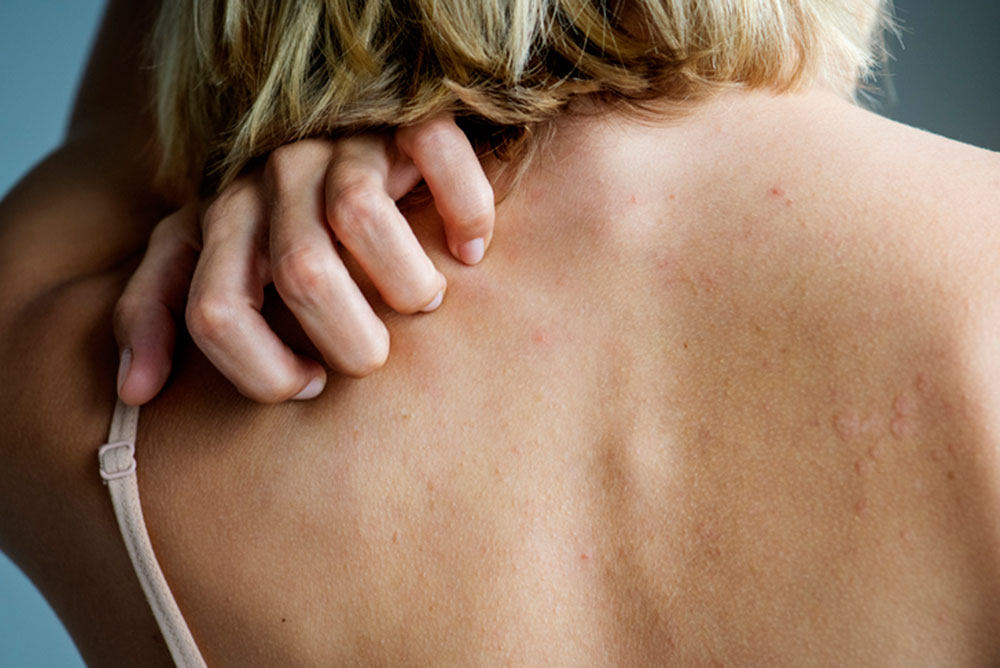
iStock
NEW YORK journalist M.W. noticed an itchy, raised rash developing on the back of her forearms below the elbows. Though she tried not to scratch, when distracted by work or during an intense conversation, she sometimes found her fingers doing just that.
“Pain’s creepy bedfellow” is how Duke University cardiology fellow Haider Warraich describes itching: “the sensation of itchiness which is perceived by some of the same skin receptors that are on the lookout for pain…like pain it can be alleviated through distraction.”
Also like pain, itching is closely linked to mental health issues such as depression and obsessive compulsive disorder. One clue for the mental component of itching, also called localized pruritis, is seeing someone else scratch can make you itch.
As with itching, “after a pain signal reaches the brain, it undergoes significant reprocessing,” Warraich writes.
Another commonality between itching and pain: capsaicin, the chili pepper extract, applied topically, causes both—and in turn, is said to help combat both, although many studies of topical capsaicin for pruritis have found insufficient evidence of effect.
More familiar as a general analgesic, capsaicin sends impulses to the brain that produce sensations of warming, tingling, itching, stinging or burning—and can diminish these responses in a process called “defunctionalization.”
Contact dermatitis is among the most common causes of itching. In M.W.’s case, a wool sweater most likely caused the initial itching, and then she scratched, which caused the rashes and bumps—which in turn caused more itching, more scratching and more reactions, until the layers of bumpy rash began to look serious.
Irritant contact dermatitis is a nonallergic skin reaction to a substance that damages the skin’s outer protective layer, and it usually develops within minutes to hours of exposure. An allergen—poison ivy, the mango plant, nickel, formaldehyde—can provoke a similar reaction.
Whatever the initial cause, repeated scratching can lead the bumps to ooze, creating a good place for bacteria or fungi to grow and cause infection. Independently, fungi can also cause itching—as in athlete’s foot.
In very cold weather, itching can arise in exposed areas of skin. With “frostnip,” the body’s first reaction,” skin turns pale or red—followed by red, white or yellow patches, itching, pain and prickling—which can proceed to frostbite.
Among other common causes of itching, eczema and psoriasis are both “atopic”—hypersensitivity reactions that occur in a part of the body not in contact with an allergen. Both are traced to a combination of genetics and environmental causes, such as pollen. Psoriasis causes itching that is similar to that of eczema but less intense. It’s often accompanied by a stinging or burning sensation, compared to that produced by fire ants.
Lichen sclerosus (LS), with symptoms of white spots and pain along with itching, is usually blamed first on an “overactive immune system.” When traced to previous trauma or infection, LS qualifies as an autoimmune disease in which the body’s immune system attacks healthy tissue, causing inflammation and damage.
Finally, the nerve disorder notalgia paresthetica (NP) can produce an intense and sometimes painful itching on the back, often between the shoulder blades and usually on an area of skin just past reach. Usually, NP occurs in patients with a history of upper back or neck pain.
NP can begin when bones or muscles trap and put pressure on nerves—caused initially by a back injury or herniated disc, or shingles. Scratching the itch of NP can create patches of darker colored skin. Topical capsaicin is often the first treatment.
Besides capsaicin, treatment for all itching can include pain relievers like lidocaine as well as corticosteroid creams. Particular bacteria, applied topically, may kill the bacteria that plays a role in some cases of eczema as well as in acne. For many people like M.W., in addition to cortisone cream, the crucial component of treatment is often the most arduous: to stop scratching.
—Mary Carpenter
Every Tuesday in this space, well-being editor Mary Carpenter reports on health news you can use.
